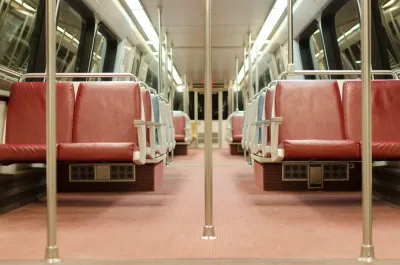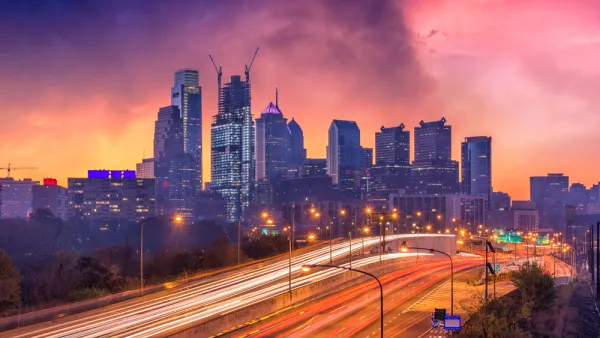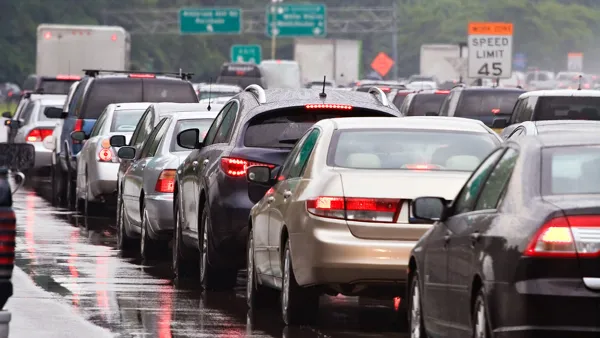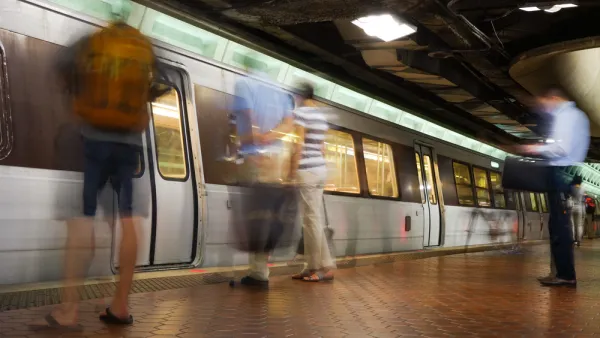The news from the most recent American Community Survey data isn't entirely bad for advocates hoping that Americans will switch to more efficient, less impactful forms of commuting.

Romic Aevaz shares analysis of one-year estimates of commutes from the 2018 American Community Survey, reporting increasing teleworking and declining in driving alone.
"Data from the newly released 2018 American Community Survey shows that telework continued its upward trend, while driving alone to work trended slightly downward. Several regions that had a reduction in the share of workers driving alone had a corresponding increase in biking and walking to work.'
According to Aevaz, working from home has surpassed public transit commuting for the second year in a row. Really, driving alone is mostly the same, having declined only slightly from 76.4 percent mode share nationally in 2017 to 76.3 percent in 2018. The figure has declined from 76.5 percent in 2014. Public transit commutes have declined from 5.2 percent in 2014 to 4.9 percent in 2018, according to the data.
There is a lot more nuance available at the regional level, as detailed by tables created for the article. Aevaz explains the big takeaways from regional data thusly:
Of the 15 regions profiled, the share of workers driving alone decreased in the past year in 10 of the regions and 9 of the core cities. The most substantial drops were in Seattle (-2.8% in the city, -1.5% regionally), San Francisco proper (-2.1%), Detroit (-2% in the city, -1.1% in the region), Philadelphia proper (-1.5%), and San Diego proper (-1.5%). The most substantial increase was in Houston (1.2% in the city, 0.6% in the region). In a few cities, the share of commuters driving alone to work moved noticeably in opposite directions in the city proper and broader region. In Atlanta and San Francisco, the share of workers driving alone dropped in the city limits (almost 1 point in Atlanta, two points in San Francisco) but increased in the region as a whole.
There are a lot more details in the article, as well as a promise of five-year data to come in December.

National Parks Layoffs Will Cause Communities to Lose Billions
Thousands of essential park workers were laid off this week, just before the busy spring break season.

Retro-silient?: America’s First “Eco-burb,” The Woodlands Turns 50
A master-planned community north of Houston offers lessons on green infrastructure and resilient design, but falls short of its founder’s lofty affordability and walkability goals.

Delivering for America Plan Will Downgrade Mail Service in at Least 49.5 Percent of Zip Codes
Republican and Democrat lawmakers criticize the plan for its disproportionate negative impact on rural communities.

Test News Post 1
This is a summary

Test News Headline 46
Test for the image on the front page.

Balancing Bombs and Butterflies: How the National Guard Protects a Rare Species
The National Guard at Fort Indiantown Gap uses GIS technology and land management strategies to balance military training with conservation efforts, ensuring the survival of the rare eastern regal fritillary butterfly.
Urban Design for Planners 1: Software Tools
This six-course series explores essential urban design concepts using open source software and equips planners with the tools they need to participate fully in the urban design process.
Planning for Universal Design
Learn the tools for implementing Universal Design in planning regulations.
EMC Planning Group, Inc.
Planetizen
Planetizen
Mpact (formerly Rail~Volution)
Great Falls Development Authority, Inc.
HUDs Office of Policy Development and Research
NYU Wagner Graduate School of Public Service





























